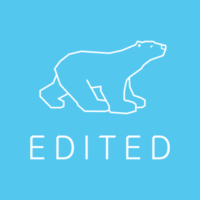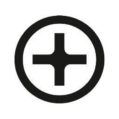Combining Beauty & DTC: Q&A with EDITED
by Hugh Williams on 6th Sep 2019 in News


The beauty industry has proven to be an accessible industry from new DTC brands to influencers all getting in on the game. But it's proving to be more difficult to stay relevant in this crowded space especially with changing consumer trends. Here, Sven Poppelmann (pictured below), CTO, EDITED, tells DTC Daily how his business are looking to address this issue.
Can you explain how the EDITED's beauty vertical platform works?
Since EDITED’s inception, we’ve been tracking apparel companies by pulling publicly available information like SKU activity, sell-outs, colours, pricing and more from a retailer’s website. Our retail decision platform has compiled historical data on retailers over the past seven years and continue to track new retailers 24 hours a day, 365 days a year. So on top of all that historical apparel data, our platform now tracks the beauty and homeware sectors too. All data within our platform is analysed using AI and Machine Learning models, which are aggregated into user-friendly graphs and charts. So retailers can analyse the numbers behind trends, giving them a clear view into actual performance.
How will EDITED help DTC beauty brands?
EDITED’s new beauty vertical enables brands to optimise their decision-making, increase speed to market and cut any guesswork when planning out their beauty assortments and pricing strategies. This new feature allows beauty retailers to pinpoint any missed opportunities within their segment. For instance, it’s easy to see how well lipsticks are performing in the UK market. Retailers are able to determine whether they need to invest less in that area and/or start making skincare products. Companies are able to evaluate what kinds of investments to make before wasting loads of money testing different products in their market, which is especially important for new DTC brands who are targeting the consumer base as other brands.
What sort of data does your retail data platform analyse, and how can brands and retailers use this to their advantage?
Retailers are able to strategically analyse anything from pricing structure, assortment, colour, patterns, discounting and more in various markets they’re already in or planning to enter. Merchandisers and buyers are then able to make better informed decisions based on data to generate a competitive advantage, resulting in higher revenues and reduced discounting rates due to overstocking.
What trends has this data revealed so far?
We’ve definitely seen an increase of apparel companies getting involved in beauty with their own offerings. EDITED found beauty mentions across beauty and non-beauty brands in the US have increased by 58% from 2017 and 2018, then rose by 24% in the UK.

Sven Poppelmann, CTO, EDITED
Demand for more luxurious skincare brands have shifted consumer trends from makeup to skincare. EDITED’s in-house team of analysts looked into new skincare and beauty arrivals over the past three months and found that new makeup at Neiman Marcus declined by 3.5%, while skincare saw an 11% increase.
What must beauty brands launching into this crowded vertical do to stand out?
The beauty landscape is constantly shifting between new trends and as long as your business stays on top of current consumer’s demands then you’ll remain relevant. Currently demand for sustainability is greater than ever too. So beauty brands already incorporating these practices through sustainable packaging and clean ingredients are being highlighted now and will see long-term success in the future.







Follow Fast Growth Brands